Reply 5760 of 7338, by henryVK
- Rank
- Member
megatron-uk wrote on 2024-02-26, 16:26:henryVK wrote on 2024-02-26, 14:05:You can choose between the low resolution 320x200 MCGA and high resolution 640x200 EGA mode which uses dithering to display the extra colours. I think this makes the game look very unique for a DOS title and very, for lack of a better word, MSX-y. Apparently the studio's other DOS titles (Zeliard and Thexder 1) use the same graphics mode. Come to think of it, I want to say that New World Computing's Tunnels and Trolls also uses the EGA highres mode and dithering, as well as Legend Entertainment's and Magnetic Scroll's graphical text adventures.
That probably comes from the fact that the developers were originally targeting the PC-88 which had a similar hi-res mode. A lot of games of that era which started out in Japan would have been written for relatively hi-res, but low colour depth systems. It's a trait that continued throughout the PC-98 era as well. It probably contributed to the traditional hi-res dithered display of a lot of later titles.
That's right, these Game Arts titles (Thexder, Zeliard) are originally for the Japanese systems. Interesting that they also offer MCGA as the 256 colour low-res alternative which you don't see too often with Western games either.
The fascinating thing is not just the higher resolution, though, but the custom colours from the 64 colour EGA palette. That's what makes the Legend and Magnetic Scrolls look so unique imo:
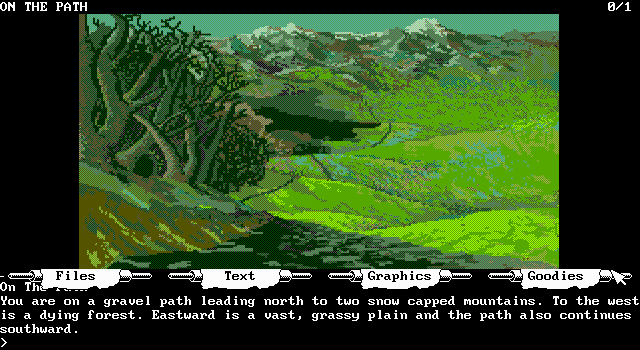
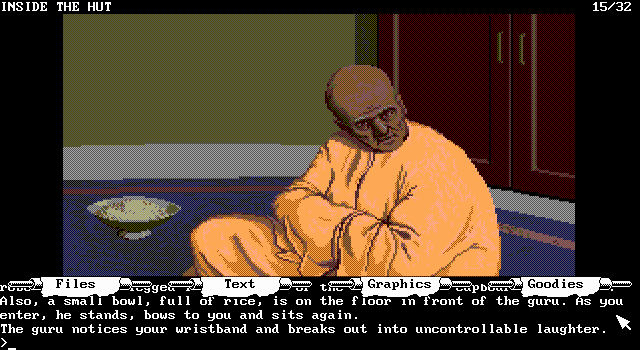
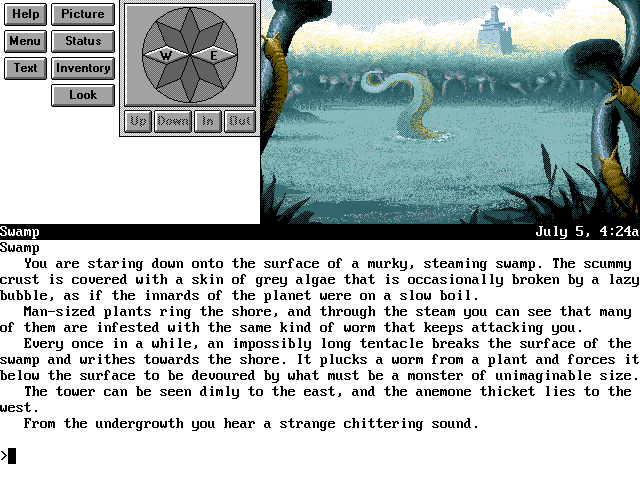
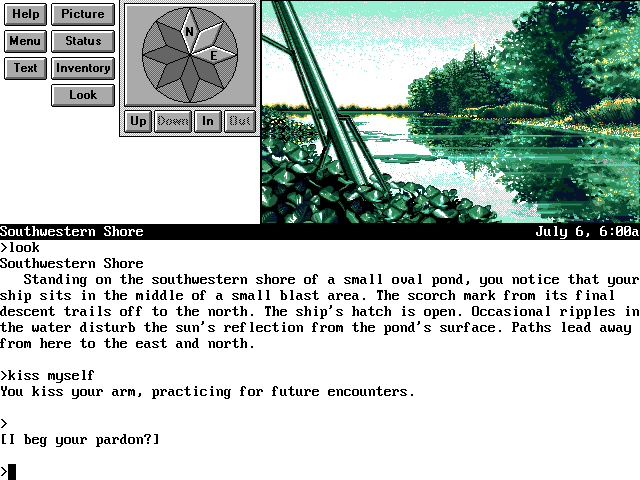
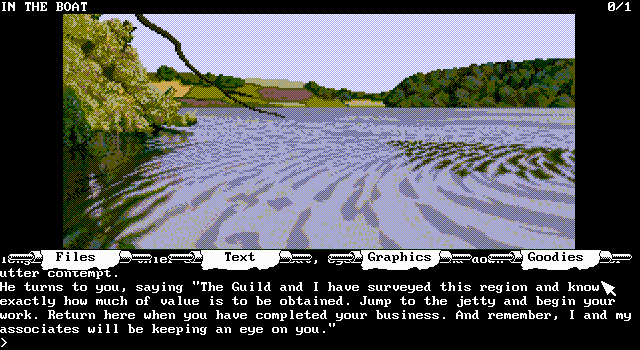
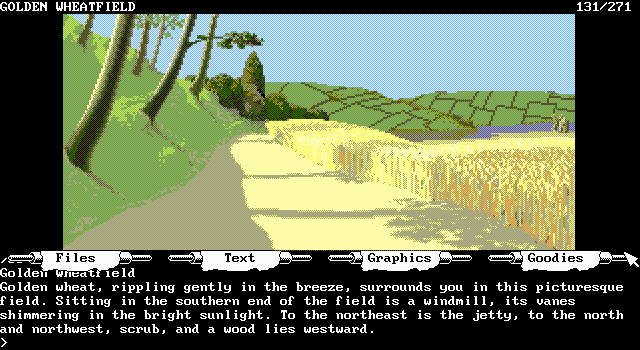
I wish more developers had used this display mode (and shown as much artistic sensibility).
Ensign Nemo wrote on 2024-02-26, 19:38:henryVK wrote on 2024-02-26, 14:05:I started playing Sierra's Conquest of Camelot and, which is rare for me, played it nearly all the way through to what I assume […]
I started playing Sierra's Conquest of Camelot and, which is rare for me, played it nearly all the way through to what I assume is the final section. However, turns out that in classic adventure game manner I overlooked a room in the starting location (castle Camelot) where you were supposed to talk to Merlin and receive an item to solve one of the final puzzles. So, basically I've been walking-dead all the way through this otherwise lovely game. Most infuriatingly, this otherwise lovely game literally kills you if you leave the starting location without performing some other tasks that, as far as I can tell only provide you with some very mild hints, but it totally let's you go into an unwinnable without the item in question... aaaarrrghhh.
Anyway, great SCI game with beautiful EGA graphics, puzzles/riddles are entertaining and not too hard but then there's the stereotypical bad game design.
I also started playing a title published by Sierra, the ungainly titled Fire Hawk: Thexder - The Second Contact. Having neither read the manual nor gotten past the first stage, I can say that it's either a hard game or that I'm approaching it wrong. Manoeuvering as the mecha feels responsive enough and it's pleasing to just let the laser weapon mow the enemies down while backpaddeling but controlling the fighter jet is less than intuitive, especially since the down arrow turns you back into the mecha no matter where you are in space.
You can choose between the low resolution 320x200 MCGA and high resolution 640x200 EGA mode which uses dithering to display the extra colours. I think this makes the game look very unique for a DOS title and very, for lack of a better word, MSX-y. Apparently the studio's other DOS titles (Zeliard and Thexder 1) use the same graphics mode. Come to think of it, I want to say that New World Computing's Tunnels and Trolls also uses the EGA highres mode and dithering, as well as Legend Entertainment's and Magnetic Scroll's graphical text adventures.
Fun (??) fact: Fate of Atlantis also supports EGA highres. Who knew.
I agree with you about these old Sierra games. I've only completed Space Quest I through IV and King's Quest I, and would like to play the rest of those series. However, I no longer have the patience to deal with unfair puzzles, especially with a backlog consisting of thousands of games. While there are hint books available, I don't want to reach a section of the game and find out from a clue that I'm missing a key object that I can't get anymore. I think the best solution would be checklists of needed items that you could consult before leaving a given area. That way you're still solving most problems yourself, but can hopefully avoid having to start over repeatedly. I'm not sure if anything like that exists unfortunately.
And Space Quest I-III don't do the player as dirty as Camlot does.
Universal Hint System is probably the closest thing to what you are looking for. It provides several levels of hints that won't spoil your game right away. Sometimes they have more general "What do I need to get in section x" hints too.
Unfortunately, for Conquest of Camelot you need the UHS software but Sierra does provide the file with the content: http://www.sierrahelp.com/Games/ConquestsSeri … amelotHelp.html


